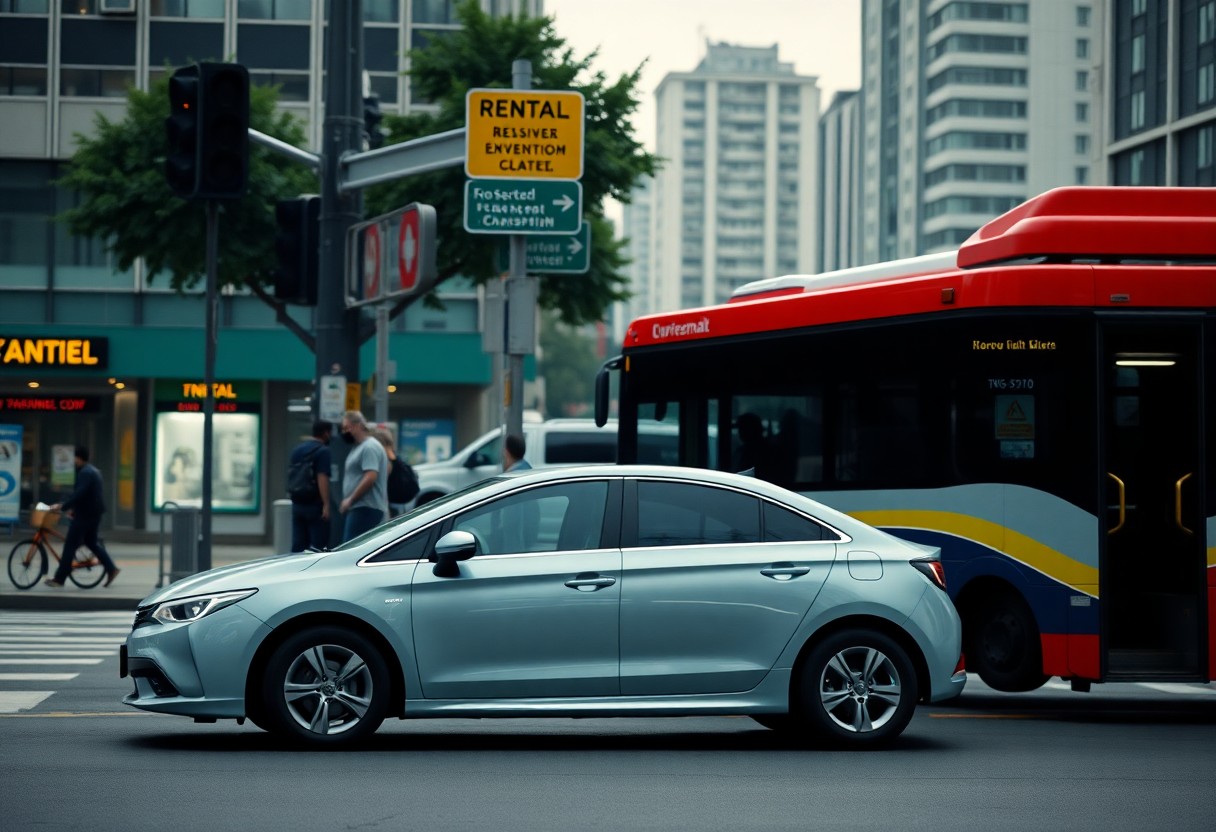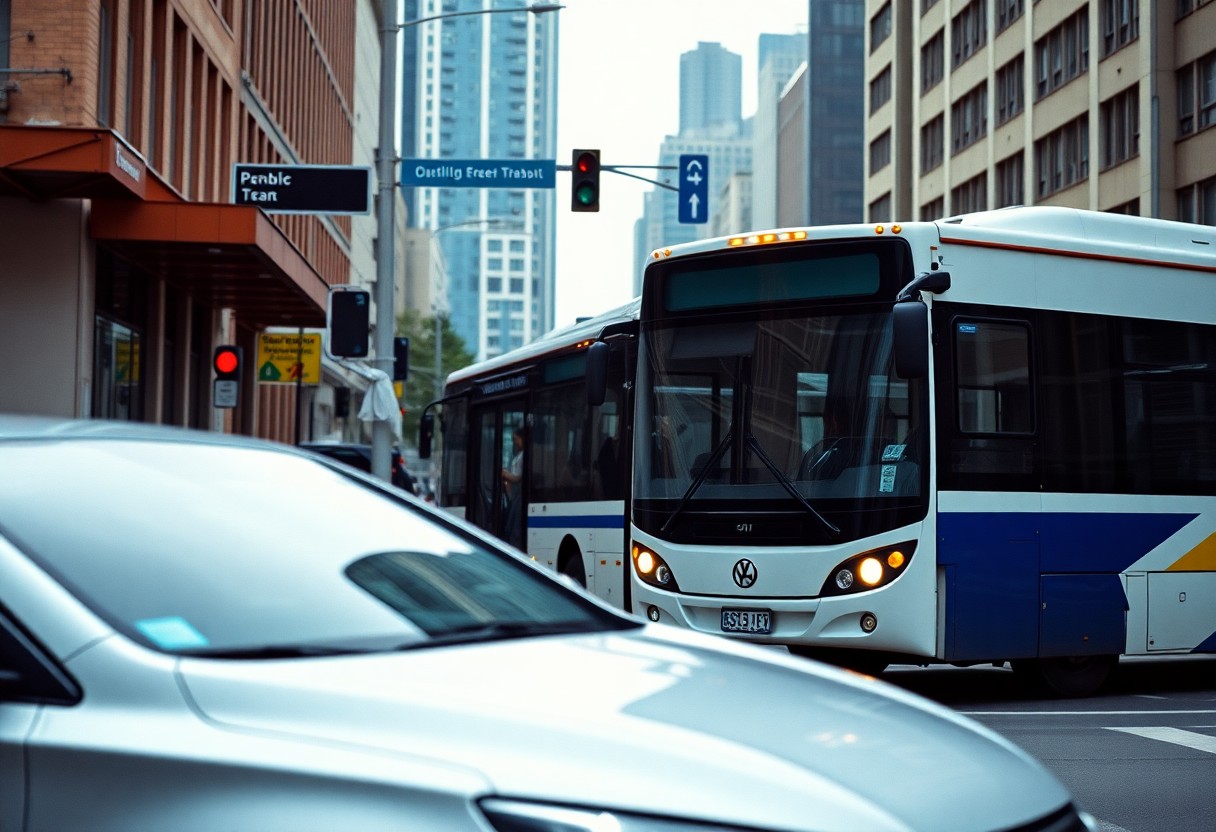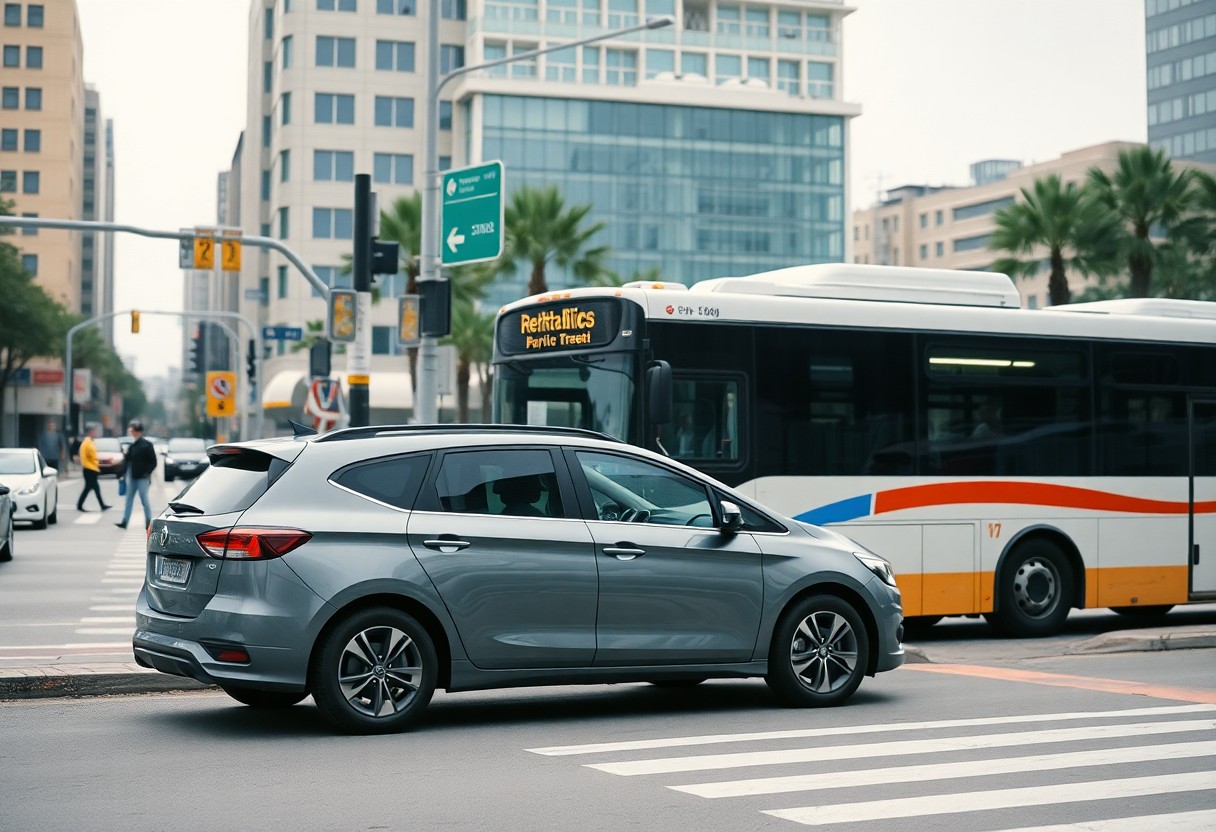As travel expenses continue to rise and personal time becomes increasingly valuable, choosing the right transportation method for your journey is essential. This decision significantly affects both your financial budget and your overall travel experience. When planning your next adventure, you’ll face the choice between the freedom offered by a rental car and the cost-effectiveness of public transportation. Your decision will depend on various factors, including your travel destination, itinerary, and the number of companions. This comprehensive guide aims to help you explore the crucial considerations, from hidden rental fees to public transport accessibility, ensuring you make the most informed choice that aligns with your unique travel needs.
Unleash Your Adventure: Enjoy the Freedom of a Rental Car
The independence that comes with having your own rental vehicle opens up a world of travel possibilities. By selecting a rental car, you gain complete control over your itinerary, enabling you to explore destinations that go beyond the usual tourist hotspots. Recent studies reveal that 73% of travelers prefer rental cars for their ability to adapt plans on the fly, making this option particularly attractive for those who value autonomy and spontaneity during their journeys. With a rental car, you can create your own paths, discover hidden gems, and enjoy the freedom to change your plans at a moment’s notice.
Weighing the Pros and Cons of Renting a Vehicle
Once you secure your rental vehicle, you’ll experience both new-found freedoms and certain limitations. You have the ability to explore off-the-beaten-path areas and adjust your schedule as needed, but it’s crucial to consider potential parking fees, which can average between $25 and $45 daily in busy urban environments. Additionally, be prepared for navigation challenges that may arise during your travels. While your rental car serves as a personal retreat, you’ll also be responsible for fuel expenses and managing traffic conditions, which can be both a blessing and a challenge. Understanding these dynamics helps you maximize the benefits of your rental experience.
Discovering Hidden Costs and Unforeseen Savings
While the freedom of a rental car comes with costs, it can also yield unexpected savings. Although initial rental fees may seem high, it’s essential to recognize that traveling in a group can often be more cost-effective than purchasing individual tickets for public transport. Recent statistics indicate that families of four or more typically save 15-20% on their transportation costs by opting for a rental vehicle over public transit options. This cost-effectiveness is particularly significant when considering the convenience and comfort that a rental car provides, making it an attractive choice for families or groups traveling together.
Delving deeper into the financial aspects reveals additional considerations to evaluate. Insurance premiums can add $15-30 per day to your rental expenses, but many credit card companies offer rental car protection options that could alleviate some of this burden. Furthermore, the fuel efficiency of modern rental fleets (averaging around 30-35 MPG) contributes to reducing overall costs, while the ability to travel door-to-door saves you valuable vacation time.

Master the Public Transportation System Like a Local
If you choose to rely on public transportation, gaining an in-depth understanding of the system should be your initial focus. Most major cities now feature user-friendly transit applications that assist with route planning, real-time arrival tracking, and ticket purchases. Familiarizing yourself with the local transit network is vital, including bus routes, subway lines, and transfer stations. Research indicates that 55% of urban travelers save as much as 30 minutes per trip by using these transit applications, making your journey more efficient and less stressful.
Navigating the Complexities of Urban Public Transit
Each city has a unique public transportation system with distinct patterns and operating rhythms. Anticipate peak hours, typically between 7-9 AM and 4-6 PM, when crowds are at their densest. Consequently, your navigation strategy should include alternative routes, as delays are common during these busy times. Incorporating a buffer time of 15-20 minutes for critical appointments will help ensure you arrive punctually, allowing you to enjoy your planned activities without stress or worry.
Engage with the Social Dynamics of Public Transit
Beyond practical considerations, using public transportation provides a unique social experience. You’ll find yourself sharing space with both locals and fellow travelers, offering a glimpse into the city’s true essence. While this can lead to occasional uncomfortable situations, it also presents valuable cultural insights and interactions. Research shows that regular public transit users develop enhanced social adaptation skills as they navigate diverse social scenarios, making public transport not just a means of travel but a way to connect with the community.
At times, you may find yourself maneuvering through various social encounters on public transport. From the bustling energy of rush hour to the quiet solitude late at night, each time period presents its own unique atmosphere. Safety becomes especially critical during off-peak hours, so it’s important to remain vigilant and choose well-lit, populated areas for waiting. Most transit systems now offer 24/7 security monitoring and emergency communication systems to enhance your safety and peace of mind while traveling.
Analyzing the Financial Aspects of Your Transportation Choices
When considering your travel options, budgeting is a key factor in deciding between rental cars and public transit. Your transportation expenses can vary dramatically depending on your destination, trip duration, and the number of travelers. While rental cars provide greater flexibility, they also come with hidden costs such as insurance, fuel, and parking fees. Although public transit may initially appear less expensive, frequent daily rides can accumulate costs quickly, making it essential to evaluate your travel patterns and preferences.
Breaking Down the True Costs of Driving
A thorough financial assessment of car rentals reveals expenses that extend beyond the daily rental rate. You should consider $30-50 daily for insurance, average fuel costs of $40-60 per tank, and potential parking fees that can escalate to $50 per day in major metropolitan areas. Consequently, your total daily travel costs could range from $100-200, making this option more economical for group travel, where costs can be shared among several passengers.
Understanding the Cost Dynamics of Public Transport Tickets
At first glance, public transportation may seem like the more economical choice. In cities like New York, where average metro cards are priced at $34 for unlimited weekly rides, significant savings can be achieved compared to rental car expenses. Additionally, you can avoid extra costs such as parking and fuel, making public transport particularly advantageous for solo travelers who prefer to navigate urban environments without the burden of a vehicle.
Cost comparisons show that weekly public transport passes in many large cities typically range from $25-40, granting unlimited rides. However, for families or groups of four or more, the overall expense of multiple transit passes might exceed the cost of renting a car, especially when planning extensive daily travel or visiting areas with limited public transport options.

Maximizing Your Time Management for Travel Efficiency
As you weigh the options of rental cars versus public transport, prioritizing your schedule is essential. A rental car enables direct, point-to-point travel, potentially saving you up to 40% of your travel time compared to public transportation. Your time is invaluable – while public transport may appear cheaper, it’s crucial to consider the hours spent waiting, transferring, and walking to and from stations, which can add up and detract from your overall travel experience.
Embrace the Flexibility of Spontaneous Scheduling
When it comes to time flexibility, a rental car grants you full autonomy over your departure and arrival times. You are free from strict transit schedules, allowing for spontaneous detours or last-minute changes to your itinerary. This level of freedom is especially beneficial when plans shift unexpectedly or when you discover hidden gems that you want to explore further.
Understanding the Challenges of Public Transport Timetables
One of the primary challenges associated with public transportation is adherence to schedules. Studies indicate that 23% of urban buses do not run on time during peak hours. Your journey may involve multiple connections, and delays in one service can create a domino effect, disrupting your entire day’s agenda. To effectively navigate public transit, it’s wise to build in extra buffer time for each connection. Transport experts recommend adding 15-20 minutes to your estimated travel time for each leg of your journey. During rush hours or special events, consider doubling these buffers, as they can significantly impact your availability for planned activities.
Assessing the Environmental Impact of Your Travel Choices
When weighing your transportation options, it’s critical to consider the environmental consequences of your decisions. A single-occupancy rental car emits approximately 404 grams of CO2 per mile, whereas public transportation can reduce emissions by up to 45% per passenger. The choice between renting a car and using public transport contributes to a lasting environmental footprint that should be factored into your decision-making process.
Understanding the Significance of Your Carbon Footprint
Every mile traveled has direct implications for climate change and environmental degradation. A fully-loaded bus can replace the need for 50 cars on the road, significantly reducing overall carbon emissions. Your journey in a rental car can produce 4-5 times more CO2 than the equivalent trip via bus or train, although choosing electric or hybrid rental options can help lessen this impact. Being mindful of your carbon footprint can guide you towards more sustainable travel choices.
Discovering Eco-Friendly Transit Alternatives
Upon arriving at your destination, you’ll find a variety of environmentally friendly transportation options to choose from. Electric car rentals can significantly reduce your carbon footprint by up to 50% compared to traditional vehicles. Additionally, many cities now feature hybrid buses and electric trams, making public transport an increasingly sustainable choice. This means that your environmental impact can vary greatly based on the transportation options you decide to utilize.
Consider adopting a mixed-method approach – rent an electric or hybrid vehicle for long trips while relying on public transport in congested areas. Many rental agencies now offer green vehicle options, allowing you to maintain mobility while minimizing your ecological footprint and contributing to a healthier planet.

Enhancing Your Travel Comfort and Enjoyment
In contrast to public transportation, rental cars provide complete control over your comfort preferences. You can effortlessly adjust the climate, seat positioning, and audio settings to suit your personal tastes, creating a tailored travel atmosphere. This level of customization becomes particularly valuable during extreme weather conditions or long journeys, where overall comfort can significantly enhance your travel enjoyment and overall satisfaction.
The Unique Advantage of Personal Space in Rental Vehicles
One of the standout benefits of renting a car is the guaranteed personal space it offers. You won’t have to contend with crowded buses or trains, where your personal space often shrinks to less than four square feet during peak travel times. Your rental car becomes a private oasis, allowing you to maintain complete control over your travel environment and the company you keep during your journey.
The Varied Comfort Levels of Public Transportation
Comfort levels on public transit can fluctuate dramatically due to factors beyond your control. During rush hours, you may find yourself squeezed in with 150-200 passengers in a single subway car, considerably diminishing your comfort. The experience often involves standing for extended periods, particularly during the average 38-minute commute in major metropolitan areas, which can feel exhausting and frustrating.
In a typical rush-hour scenario on public transport, you might encounter noise levels peaking at around 80-90 decibels, comparable to heavy city traffic sounds. These conditions, coupled with unpredictable delays and service interruptions, can make your journey less enjoyable and more taxing, especially when traveling with luggage or in a group.
Choosing the Best Transportation Option for Your Travel Needs
Ultimately, your decision between renting a car and utilizing public transport should be grounded in your specific travel requirements. If you value flexibility and comfort while traveling with family or friends, a rental car generally delivers the best value, even with the higher initial costs. Conversely, public transportation often suits solo travelers on a budget who prefer to stick to well-established routes in urban centers. It’s essential to weigh factors such as your destination, group size, planned activities, and budget. By carefully considering these elements against your personal priorities, you can select the transportation option that aligns best with your travel objectives and enhances your overall experience.
The Article: Renting a Car vs. Public Transport: Which is Best for Your Trip? appeared first on https://rentacar24.org/
The Article Renting a Car vs. Public Transport: Choose the Best Option for You Was Found On https://limitsofstrategy.com


Comments are closed